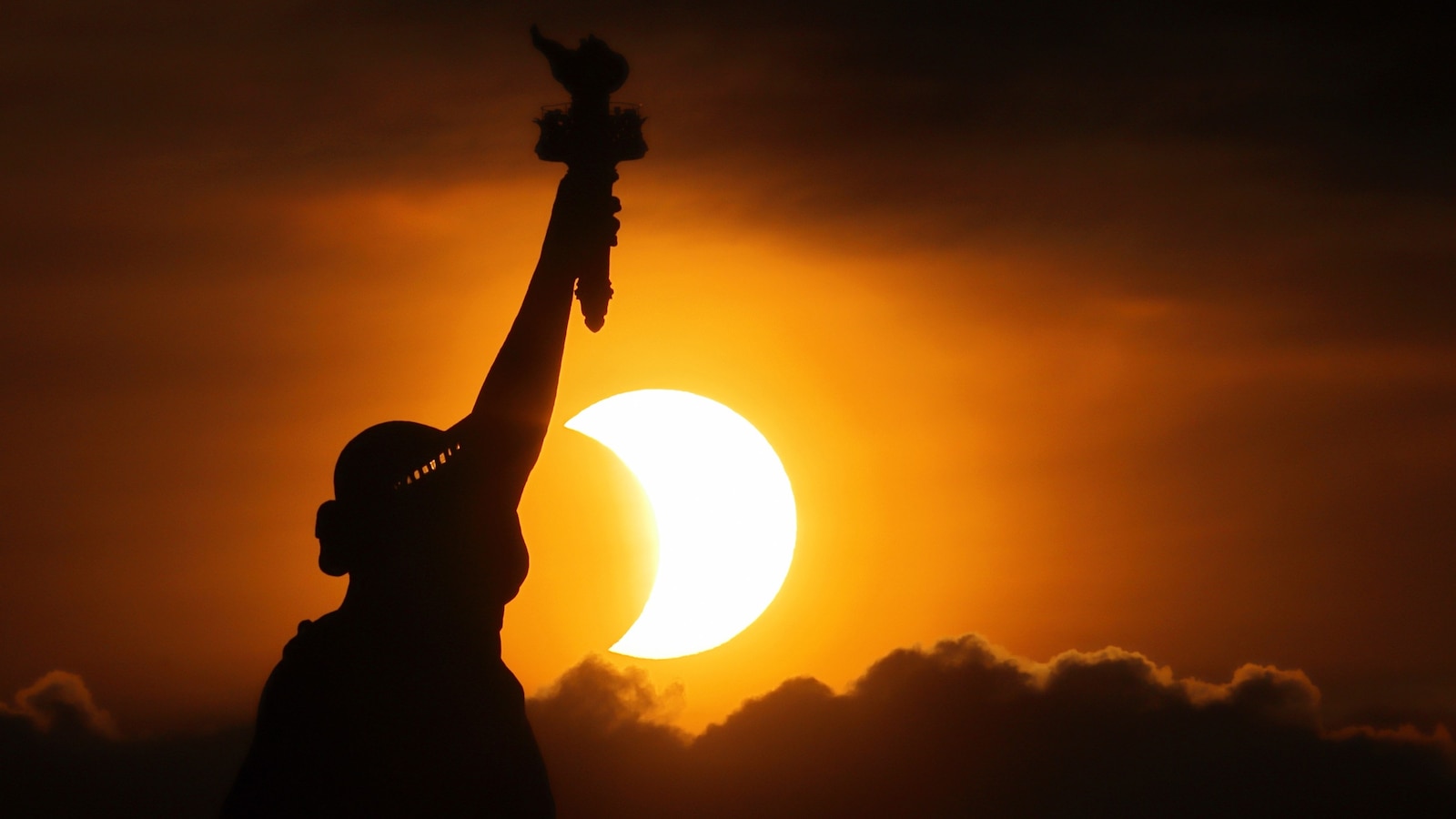Partial Solar Eclipse 2024: US States with the Best Viewing
Editor’s Note: A partial solar eclipse will grace the skies over parts of the United States on October 14, 2023. This article details the best locations for optimal viewing and crucial safety information.
Why This Matters: Witnessing a Celestial Event
A partial solar eclipse is a rare and awe-inspiring celestial event. Understanding where to view it safely and what to expect is crucial for maximizing this unique experience. This article will guide you through the best locations across the US, highlighting areas with the highest eclipse magnitude and providing essential safety tips. Don't miss this opportunity to witness a breathtaking astronomical phenomenon! Key topics covered include: optimal viewing locations, safety precautions, and understanding the science behind a partial solar eclipse.
Key Takeaways: Partial Solar Eclipse Viewing
| Feature | Details |
|---|---|
| Date | October 14, 2023 |
| Type | Partial Solar Eclipse |
| Best Viewing | Northwest US (Oregon, Washington, Idaho, Montana) and parts of Canada |
| Safety | Never look directly at the sun without proper eye protection. |
Partial Solar Eclipse: October 14, 2023
This partial solar eclipse will be visible across a large swathe of North America, but the best viewing will be in the northwestern United States. States like Oregon, Washington, Idaho, and Montana will experience a higher percentage of the sun obscured by the moon. The further east you travel, the smaller the percentage of the sun that will appear eclipsed.
Key Aspects of the Partial Solar Eclipse
- Moon's Shadow: The moon's umbra (the darkest part of its shadow) will not reach the Earth during this eclipse, hence it remains a partial eclipse.
- Magnitude: The magnitude of the eclipse (the fraction of the sun's diameter covered by the moon) will vary depending on your location. Northwest states will experience a higher magnitude.
- Duration: The duration of the partial eclipse will also vary, generally lasting for a couple of hours.
Detailed Analysis: Optimizing Your Viewing Experience
Choosing a location with clear skies and minimal light pollution is paramount. Elevated viewpoints, away from city lights, will offer the best viewing conditions. Research the specific timing of the eclipse for your chosen location to ensure you don't miss the peak.
Interactive Elements: Safety First!
Safe Solar Eclipse Viewing: Protecting Your Eyes
Introduction: Looking directly at the sun during a solar eclipse, even a partial one, can cause serious and permanent eye damage. Never compromise on safety.
Facets:
- Eye Protection: Use certified ISO 12312-2 rated solar eclipse glasses. Regular sunglasses are not sufficient.
- Indirect Viewing: Consider projecting the sun's image onto a piece of white card using a pinhole projector.
- Never Look Directly: Repeated emphasis on this point is crucial.
Summary: Safe viewing practices are essential. Prioritize certified eye protection or indirect viewing methods to prevent eye damage.
Finding the Perfect Viewing Spot: Maximize the Experience
Introduction: Location, location, location! Finding the right spot significantly enhances your eclipse viewing experience.
Further Analysis: Utilize online resources and astronomy apps to pinpoint locations with optimal viewing conditions. Consider joining local astronomy groups for organized viewing events.
Closing: Planning ahead, researching the best viewing locations, and prioritizing safety will make this celestial event unforgettable.
People Also Ask (NLP-Friendly Answers)
Q1: What is a partial solar eclipse?
A: A partial solar eclipse occurs when the moon passes between the sun and the Earth, partially obscuring the sun's disk.
Q2: Why is this partial solar eclipse important?
A: It's a fascinating astronomical event offering a unique opportunity to witness the interplay of celestial bodies. It also provides an educational opportunity to learn about solar eclipses and astronomy.
Q3: How can this eclipse benefit me?
A: Witnessing a solar eclipse can be a memorable experience, sparking an interest in science and astronomy.
Q4: What are the main challenges with viewing a solar eclipse?
A: The primary challenge is protecting your eyesight. Improper eye protection can lead to permanent damage.
Q5: How to get started with viewing the eclipse safely?
A: Acquire ISO 12312-2 certified solar eclipse glasses and find a location with a clear view of the sky.
Practical Tips for Safe Solar Eclipse Viewing
Introduction: These tips ensure a safe and enjoyable experience.
Tips:
- Buy Certified Glasses: Purchase ISO 12312-2 compliant glasses from reputable sources.
- Check the Time: Determine the precise eclipse times for your location.
- Find a Safe Spot: Choose a location with clear skies and minimal light pollution.
- Supervise Children: Always supervise children during eclipse viewing.
- Use Indirect Methods: Consider pinhole projection for safe viewing.
- Don't Use Homemade Filters: Homemade filters are unreliable and dangerous.
- Take Photos: Capture the event with a camera equipped with a solar filter.
- Share the Experience: Invite friends and family to witness this amazing event.
Summary: Following these tips ensures you can safely witness and enjoy the partial solar eclipse.
Transition: Let's conclude with a summary of the key takeaways and a final thought.
Summary (Resumen)
The partial solar eclipse of October 14, 2023, offers a spectacular celestial event for viewers across parts of the US, with the best viewing in the Northwest. Remember to prioritize safety by using certified solar eclipse glasses or indirect viewing methods.
Closing Message (Mensaje Final)
Take the time to witness this wonder of nature. Remember that safety is paramount – enjoy the spectacle responsibly!
Call to Action (CTA)
Share this article with your friends and family so they can safely enjoy this breathtaking event! Check out our other astronomy articles for more celestial wonders. [Link to other articles]

